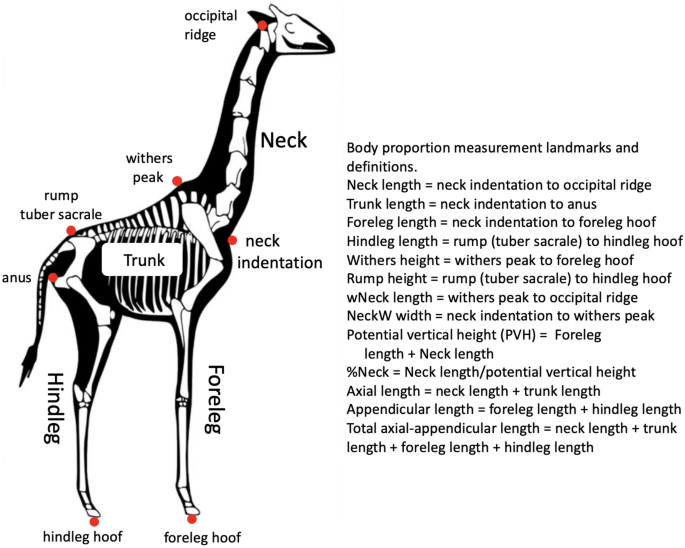2024-06-03 ペンシルベニア州立大学(PennState)
<関連情報>
- https://www.psu.edu/news/eberly-college-science/story/food-not-sex-drove-evolution-giraffes-long-neck-new-study-finds/
- https://link.springer.com/article/10.1007/s42991-024-00424-4
マサイキリンのプロポーションにおける性的二型とキリンの首の進化 Sexual dimorphisms in body proportions of Masai giraffes and the evolution of the giraffe’s neck
Douglas R. Cavener,Monica L. Bond,Lan Wu-Cavener,George G. Lohay,Mia W. Cavener,Xiaoyi Hou,David L. Pearce & Derek E. Lee
Mammalian Biology Published:03 June 2024
DOI:https://doi.org/10.1007/s42991-024-00424-4

Abstract
Giraffes exhibit a large sexual dimorphism in body size. Whether sexual dimorphisms also exist in body proportions of the axial and appendicular skeleton has been debated, particularly regarding the giraffe’s iconic long neck. We examined the anatomical proportions of the neck, forelegs, hindlegs, and body trunk of the Masai giraffe (G. tippelskirchi) in captive and wild populations. We found that female Masai giraffes have proportionally longer necks relative to their forelegs than males in contradiction to the original necks-for-sex hypothesis that proposed that the evolution of the giraffe’s long neck was driven by male-male competition. However, male neck width and apparent mass are proportionally larger than females’, supporting a modification of the necks-for-sex hypothesis. Moreover, male foreleg length is proportionally longer whereas female trunk length is proportionally longer. These sexual dimorphisms were found in both captive and wild Masai giraffes. We speculate that the initial evolution of the giraffe’s long neck and legs was driven by interspecific competition and the maternal nutritional demands of gestation and lactation through natural selection to gain a competitive advantage in browsing, and then later the neck mass was further increased as a consequence of male-male competition and sexual selection. Differences in the proportions of major body components define sex phenotypes, but several giraffes display opposite-sex phenotypes with a significantly higher level of discordancy seen in captive males. We speculate that body proportion sexual dimorphisms are maintained in the wild by natural and/or sexual selection, but in captivity selection is relaxed resulting in a higher occurrence of discordances in sexual phenotypes.


